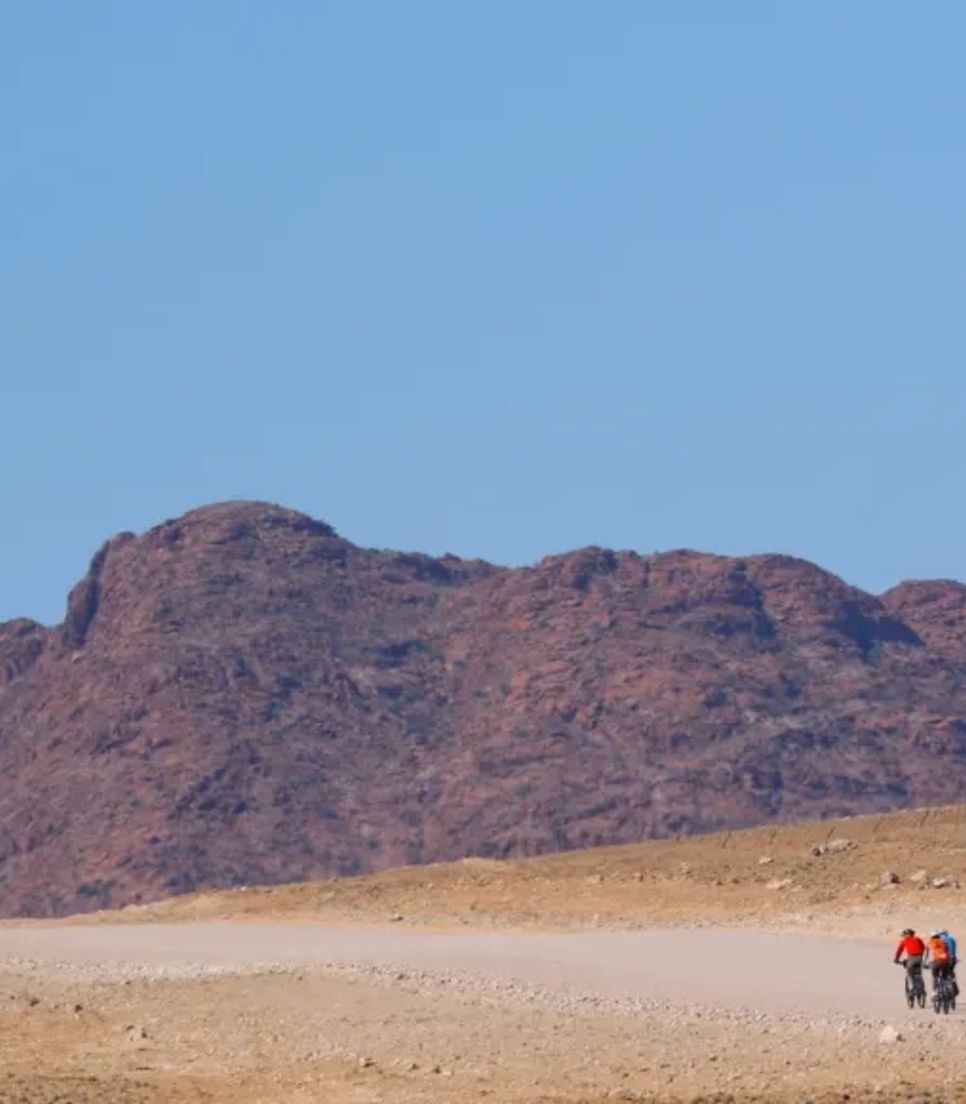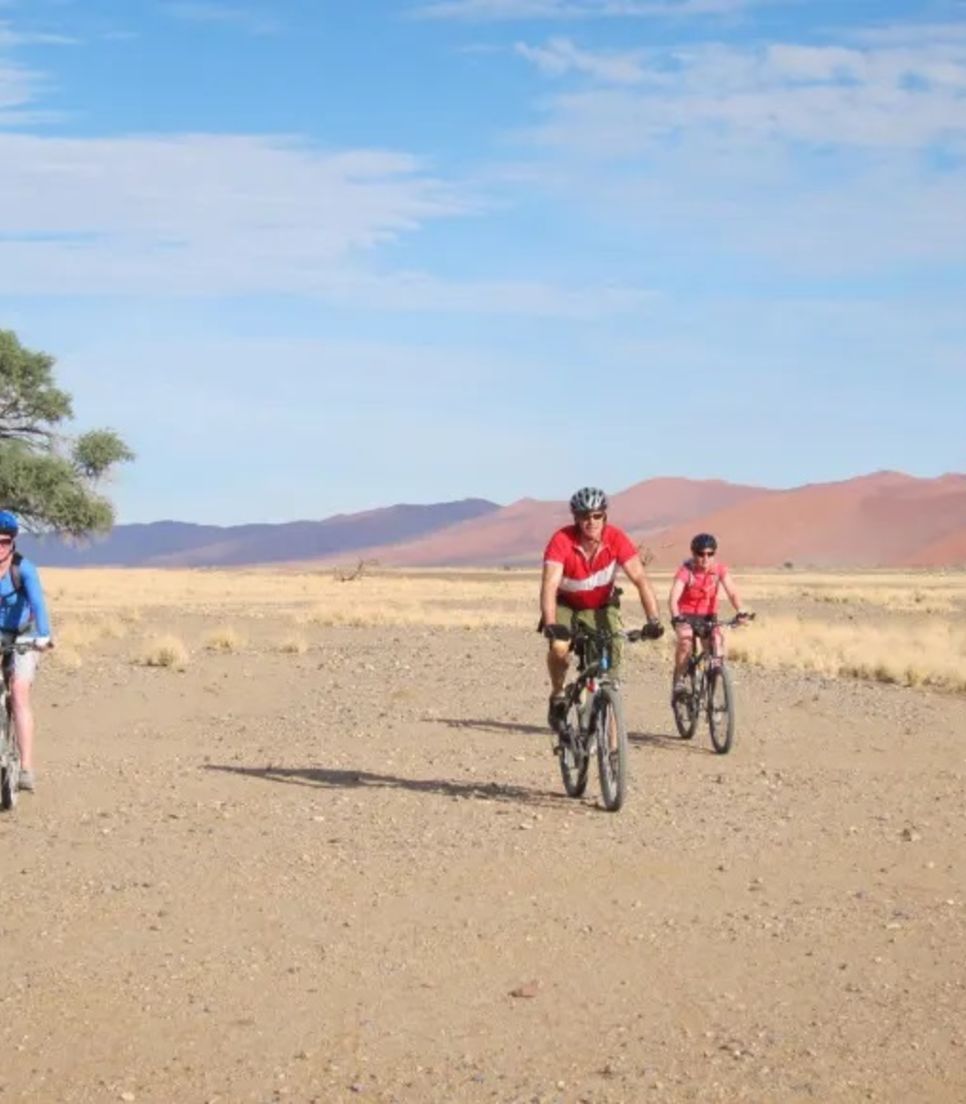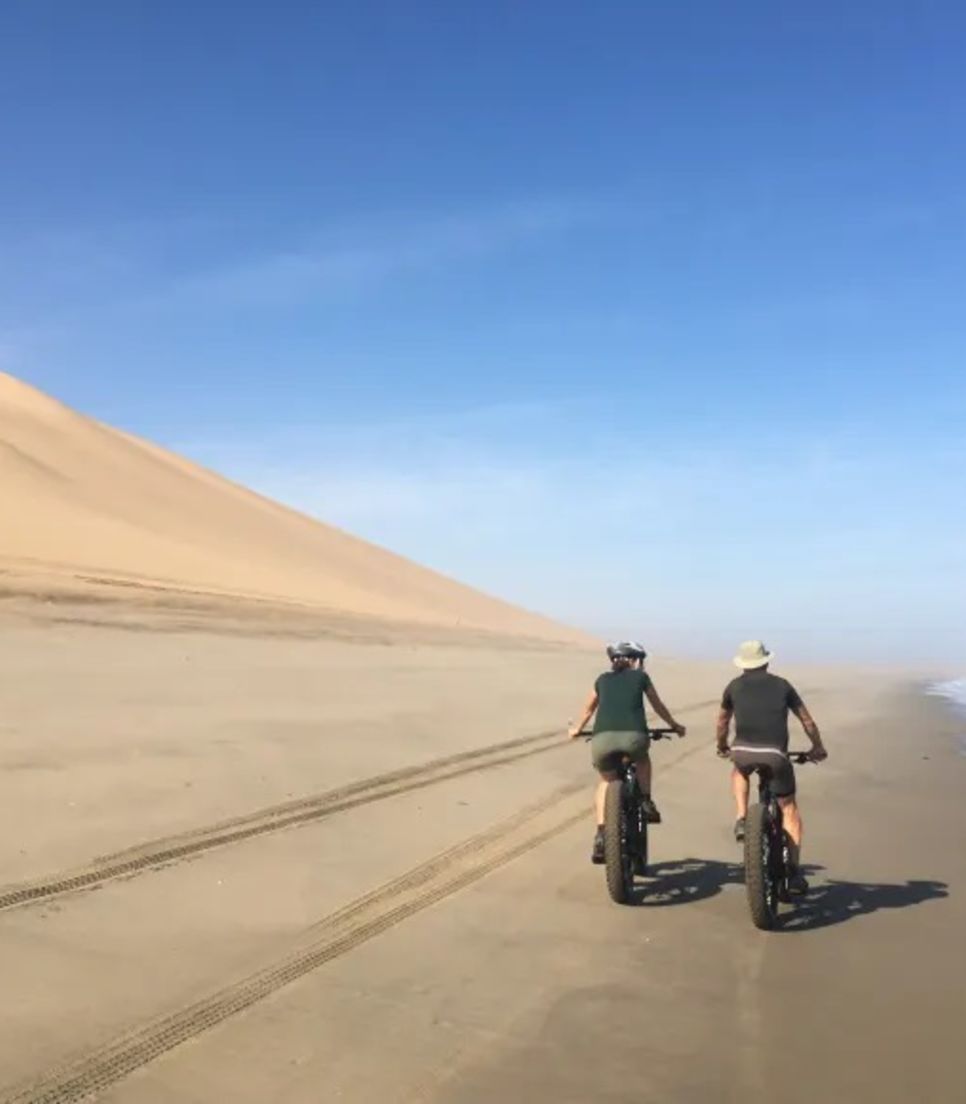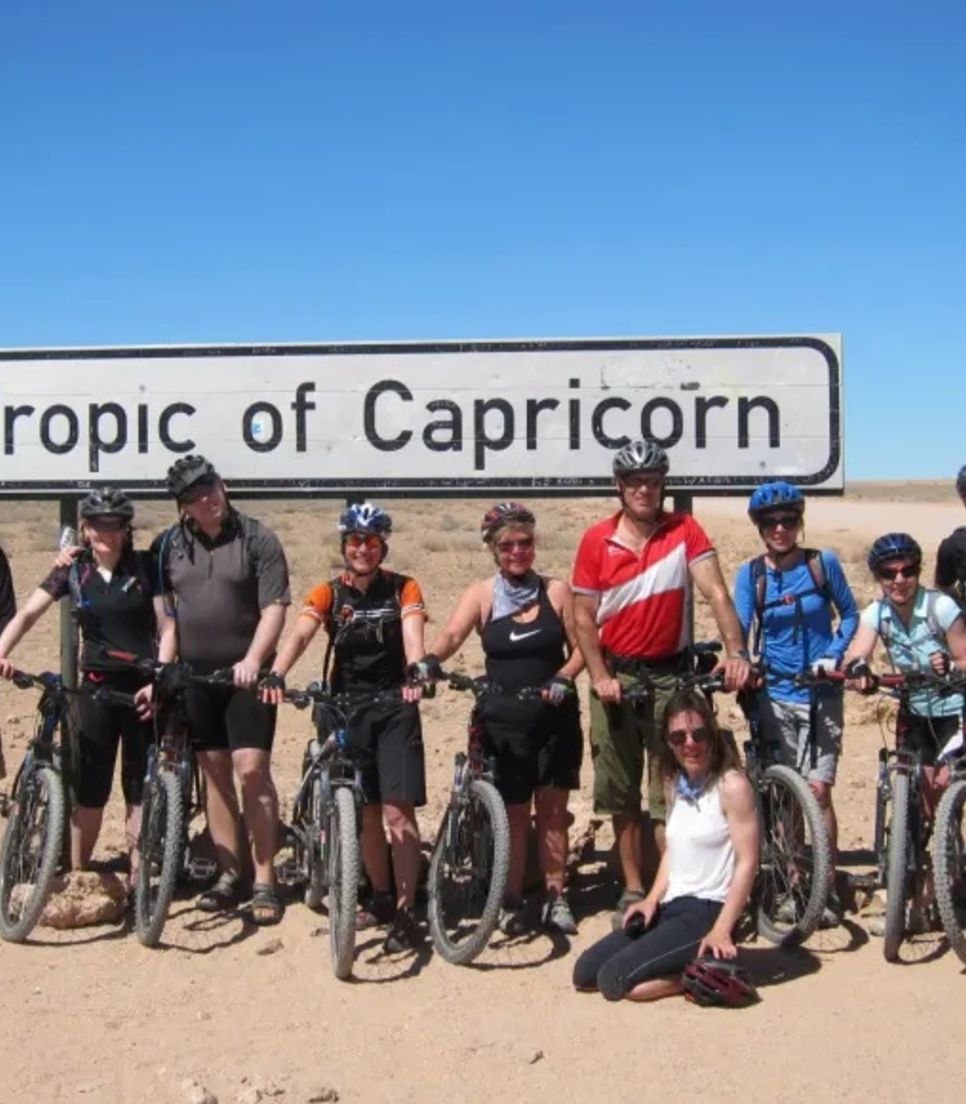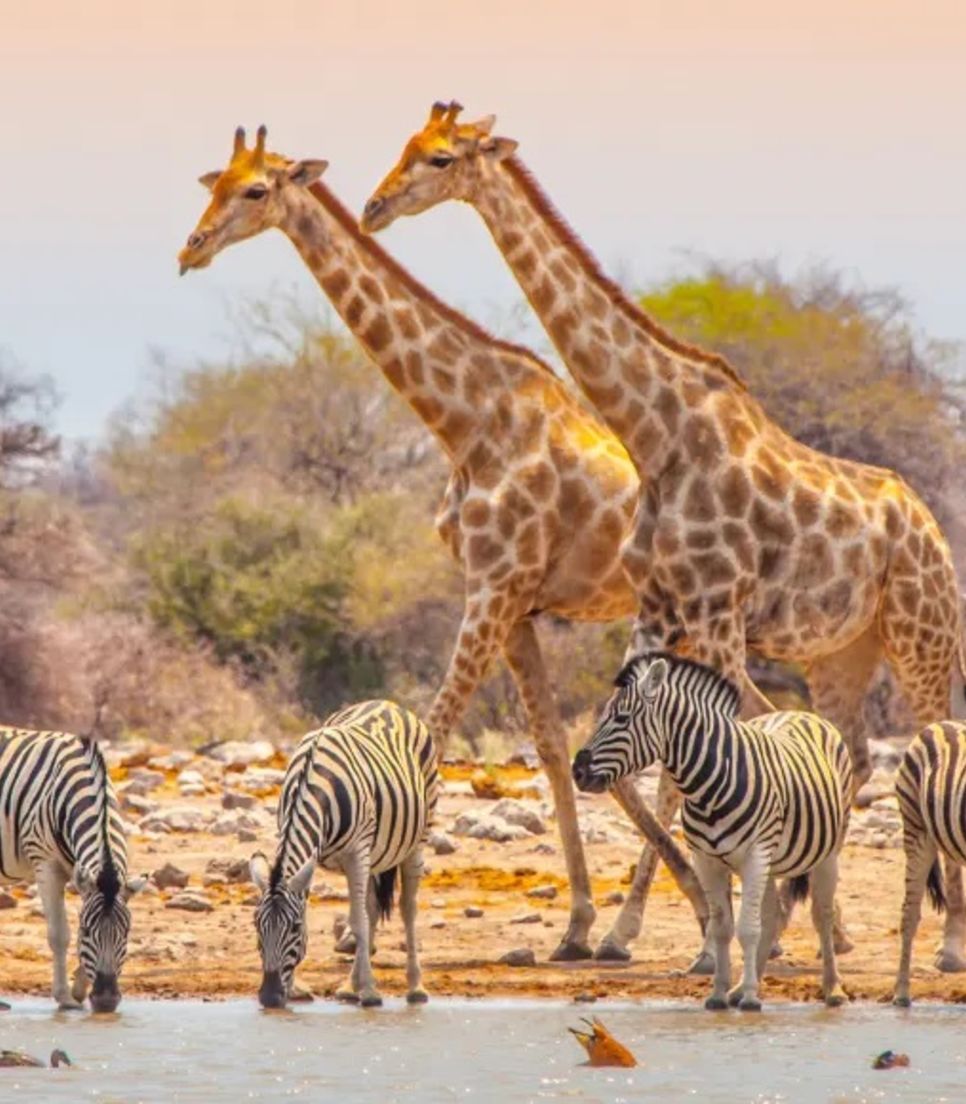We deal directly with each tour operator, which means we can guarantee you the best price. If within 24 hours of your booking you find the exact same tour elsewhere for a lower price, let us know and we'll refund you the difference!
Cycle Namibia
Explore the stunning landscapes of Namibia with an adventurous tour! Cycle through the wilderness and take in the breathtaking views of vast plains, rocky outcrops, and endless skies. Witness the incredible wildlife of Etosha National Park during exciting safari drives. For a unique experience, explore the sand dunes on a modified 'fat' bike, and visit Waterberg National Park's red sandstone table mountain. Most of all, don't miss the chance to discover the highest dunes in the world! This tour promises to be an unforgettable journey through the rugged beauty of Namibia.
- CategoryAdventurous
- TypeFully Guided
- Duration12 days
- Culture LevelAdventurous
- Skill Level3 - Intermediate
- Activity Level3 - Active
- Elevation2 - Moderate
- TerrainArid
- Distance177.1 miles
- Avg. Daily Distance22.4 miles
 Exodus Travels
Exodus Travels